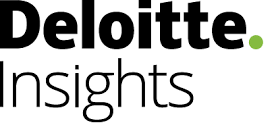During the past four years, use of analytics to mitigate third-party supply chain fraud, waste, and abuse risk has jumped to 35 percent in 2017 from 25.2 percent in 2014, according to a Deloitte poll.
“It’s encouraging to see more organizations using analytics to help prevent and detect financial abuses within supply chains each year,” said Mark Pearson, Deloitte Risk and Financial Advisory forensic principal, Deloitte Financial Advisory Services LLP. “Unfortunately, increased vigilance doesn’t translate into lower instances of fraudsters trying to perpetrate their schemes. Even the most advanced analytics users should work to constantly evolve their efforts to stem supply chain fraud, waste, and abuse.”
Between 2014 and 2017, an average of 30.8 percent of poll respondents reported at least one instance of supply chain fraud, waste and abuse in the preceding year. However, some industries saw higher and lower rates of financial abuse.
For the third time in four years, consumer and industrial products professionals reported the highest level of supply chain abuse for the past 12 months (39.1 percent), a slight decline from 2016 (39.6 percent). Energy and resources (34.7 percent) respondents also reported a higher than average rate of financial abuse in 2017, dropping a bit from 2016 (35.9 percent). Life sciences and health care professionals noted a marked decline in 2017 (26.3 percent) from 2016 (36.9 percent).
“In the energy and resources industry, I’ve seen complex capital projects rife with bribery, bid rigging, collusion, fraud, and other schemes,” said Larry Kivett, Deloitte Risk and Financial Advisory forensic partner, Deloitte Financial Advisory Services LLP. “Beyond reducing sole-sourced procurement to manage risk, supply chain executives can also prevent financial abuses by working to improve supplier invoicing timeliness, accuracy, and approval processes.”
Pearson concluded, “From a life sciences and health care perspective, I’m surprised to see such a big drop-off in reports of financial abuse from 2016 to 2017. But, I wouldn’t take that slowdown as a reason for supply chain executives to get comfortable. Even in highly regulated industries, there are still motives for bad actors to commit supply chain abuses. Managing supply chain risk is a constant effort.”
SC
MR


Latest Supply Chain News
- How CPG brands can deliver on supplier diversity promises
- How S&OP provides the answer to in-demand products
- AI, virtual reality is bringing experiential learning into the modern age
- Humanoid robots’ place in an intralogistics smart robot strategy
- Tips for CIOs to overcome technology talent acquisition troubles
- More News
Latest Podcast

 Explore
Explore
Business Management News
- How CPG brands can deliver on supplier diversity promises
- How S&OP provides the answer to in-demand products
- AI, virtual reality is bringing experiential learning into the modern age
- Tips for CIOs to overcome technology talent acquisition troubles
- There is still work to do to achieve supply chain stability
- Blooming success: The vital role of S&OE in nurturing global supply chains
- More Business Management
Latest Business Management Resources

Subscribe

Supply Chain Management Review delivers the best industry content.

Editors’ Picks





